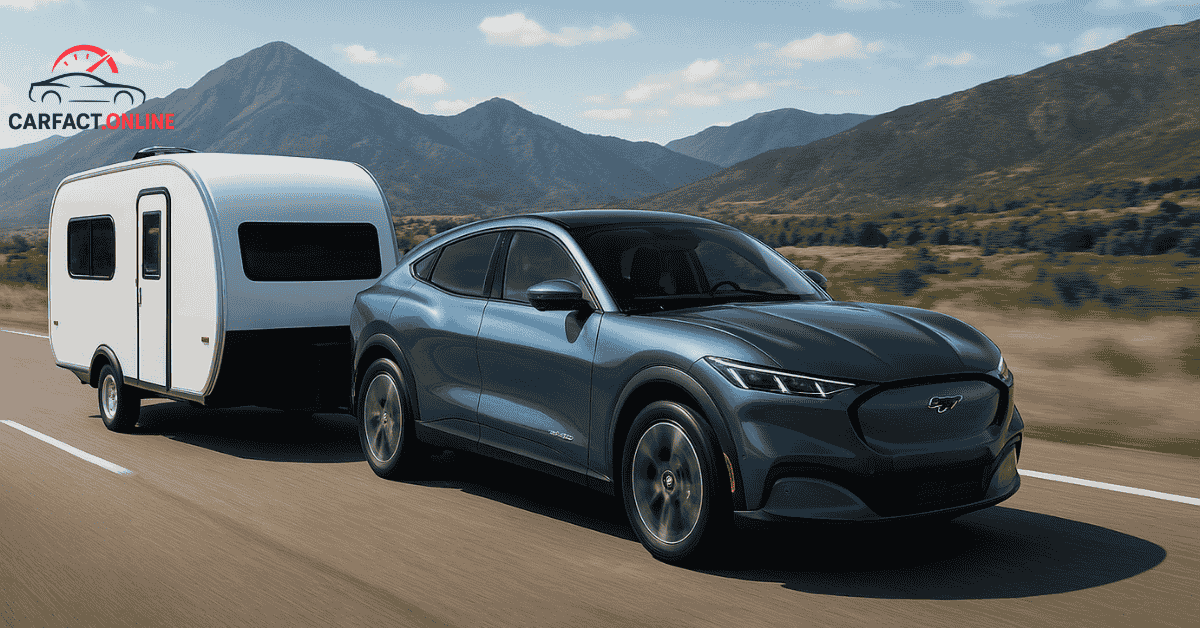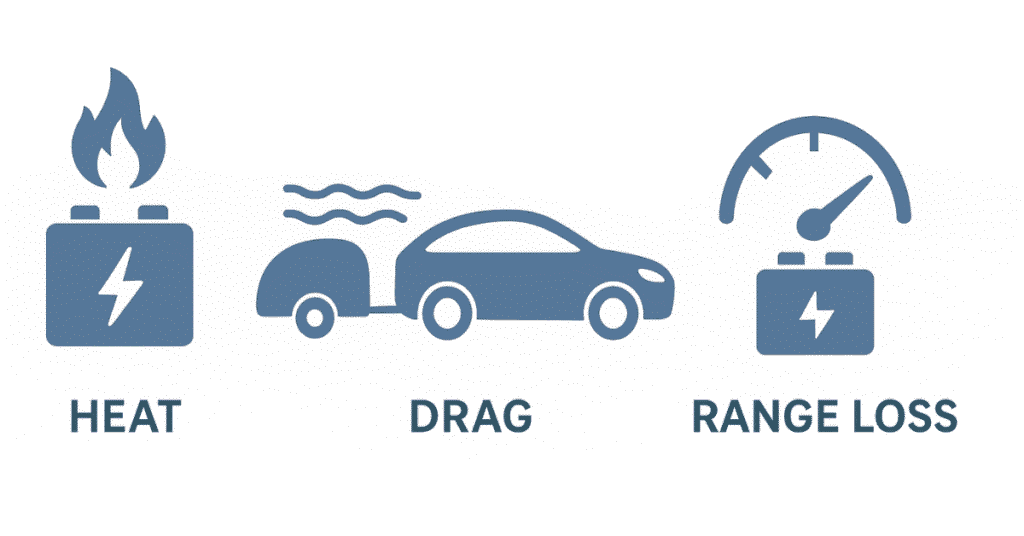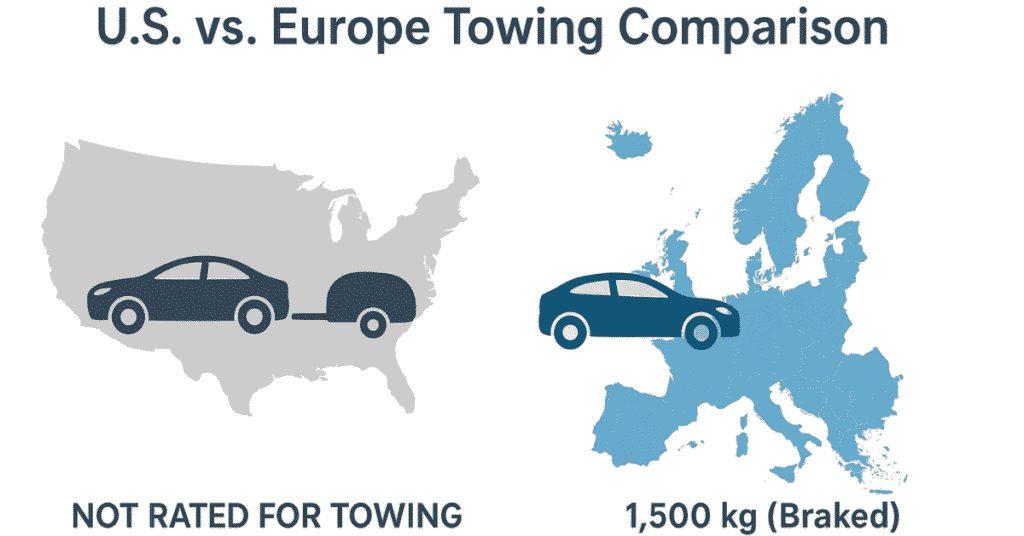2025 Ford Mustang Mach-E Towing Capacity: What You Need to Know

If you’re shopping for an electric vehicle and hope to use it for occasional towing—say a small trailer, boat, or cargo carrier—you might wonder: Can the 2025 Ford Mustang Mach-E tow anything? After all, EVs are known for high torque, yet they often come with constraints when it comes to machinery like hitches, cooling, battery strain, and regulatory approvals.
In this article, we’ll dive deep into 2025 Ford Mustang Mach-E towing capacity (and the caveats around it). You’ll discover how different markets treat Mach-E towing, what a “tow rating” means (or doesn’t mean), how to choose hitches, the effect on range, safety rules, and real-world tips from owners. By the end, you’ll know whether towing with a Mach-E fits your lifestyle—and if not, what alternatives you should consider.
Overview: Towing with EVs — Why It’s Different
Electric vehicles bring strong torque from zero RPM, which sounds ideal for pulling loads. However, towing challenges EVs more than internal combustion vehicles because:
- Battery heat management and extra current draw can stress the system.
- Aerodynamic drag and rolling resistance magnify “range penalty.”
- Suspension, chassis, cooling, and safety systems may not be engineered for towing by default.

Because of these extra stresses, many EVs are either not rated for towing in certain regions or have restricted tow capabilities. The Mustang Mach-E is a prime example of this divergence between markets.
U.S. Policy: Mach-E Is Not Recommended for Towing (2025)
In the 2025 Ford RV & Trailer Towing Guide, Ford explicitly lists the Mustang Mach-E among vehicles that are “not recommended for trailer towing.”
What that means in practice:
Ford gives no official towing capacity in the U.S. for the Mach-E.
- Owners who attempt to tow with a Mach-E in the U.S. do so at their own risk—Ford may disclaim warranty coverage for damage caused by towing.
- Many forums and owner communities caution that adding a hitch or trailer may lead to insurance complications or service refusals.
- Physically, the Mach-E can be fitted with aftermarket trailer hitches (Class II style, 2″ receivers), but these are not factory standard, and the presence of a hitch does not translate into an approved or safe tow rating.
So in the U.S., the baseline rule is: the Mach-E is not designed or certified for towing.
Europe & Other Markets: 1,500 kg (Braked) in Select Models

In contrast, Ford does permit towing in many European markets. The 2025 Mach-E, particularly in variants with the extended-range battery (approx. 91 kWh) and either rear-wheel drive (RWD) or all-wheel drive (AWD), is rated to tow up to 1,500 kg (3,306 lb)—when equipped with the approved towing package.
Highlights:
- This figure refers to braked towing (i.e. trailer has its own brakes).
- Mach-E models with smaller battery packs or earlier variants may carry a lower approved towing rating (for example, some extended-range models were earlier rated at 1,000 kg).
- The trailer speed, towing rules, and maximum tongue weight (often ~10–15 % of trailer gross) must also be respected.
- The 1,500 kg rating is typical for AWD + extended-range models; lesser trims (RWD, lower battery) may see less.
Thus, in Europe, towing is a legitimate option for Mach-E owners—provided you have the correct hardware and abide by local rules.
What Is a “Tow Rating”? GVWR, GCWR, Payload, Tongue Weight
To interpret towing specs (or the lack thereof), let’s define a few key terms:
| Term | Definition | Relevance to Mach-E |
| GVWR (Gross Vehicle Weight Rating) | Maximum allowable total weight of vehicle + passengers + cargo | Determines how much “mass budget” is left to tow |
| GCWR (Gross Combined Weight Rating) | Max allowable weight of vehicle + trailer | The upper limit of what you can safely pull |
| Payload | Weight you can carry (cargo + passengers) inside the vehicle | Subtract this from GVWR to see how much trailer weight is feasible |
| Tongue Weight | The downward force the trailer tongue exerts on the hitch (often ~10–15 %) | Must be within the hitch/vehicle’s design limits |
Because Ford does not publish a Mach-E GCWR or GVWR for towing in the U.S., it is essentially impossible to reliably back-calculate a safe trailer weight for U.S. Mach-E owners.
In Europe, with an approved 1,500 kg rating, Ford must have specified or internally accounted for these factors according to regional regulations.
So even when using an aftermarket hitch in the U.S., you’re operating without factory guidance on those key vehicle limits.
Mach-E Variants & Towing Feasibility (RWD, AWD, Battery)
If towing were allowed, the variant would matter:
- RWD (single motor) models deliver good torque to one axle and may be simpler in terms of thermal management.
- AWD (dual motor) models distribute torque front and rear and may offer better traction when pulling.
- Extended-range battery (the 91 kWh or equivalent pack) gives more energy reserve and helps buffer the range drop when towing.
- Standard-range battery models would see a proportionally larger percentage loss of range under load and higher stress.
In Europe, Ford explicitly ties the 1,500 kg braked tow rating to “extended-range” models (RWD or AWD).
Range & Efficiency Impacts When Towing
Towing a trailer dramatically increases drag, rolling resistance, and energy consumption. Some real-world observations from Mach-E owners and testers:
- Users report range dropping to 20–50% of normal values depending on trailer size, speed, and conditions.
- One YouTube test with a 1,500 kg trailer showed the Mach-E’s range fall sharply in real driving conditions.
- The heavier the trailer and the faster the speed, the more the impact — even regenerative braking will be less effective uphill or during sustained loads.
Thus, even where towing is allowed, Mach-E owners must plan carefully for range constraints, charging stops, and the extra time and energy cost of pulling a load.
Hitch & Towing Hardware for Mach-E

If you decide to tow (in markets where allowed) or carry a bike rack or cargo carrier (in U.S. with caution), here’s what you need to know:
- Trailer hitch / Class II Hitch: Many aftermarket firms offer 2″ receiver hitches rated (for instance) 3,500 lb towing / 525 lb tongue weight for EVs including Mach-E.
- Trailer wiring harness: Typically 7-pin (for trailers with brakes) or 4-pin (for simpler lights). Must integrate with Mach-E’s electrical and software systems correctly.
- Structural support: Hitch must be mounted solidly to frame points, not just bumper.
- Tow package / trailer tow package: In Europe, Mach-E may require an official Ford-approved tow kit for the towing rating to apply.
- Sway control, weight distribution, safety chains: Standard safe towing gear must be used.
Even with the hardware in place, in U.S. models the absence of a factory sanctioned towing rating means you’re assuming all risk—mechanical, warranty, and legal.
Legality, Warranty & Safety Concerns
Warranty Risk
Using an electric vehicle in a way the manufacturer doesn’t intend can complicate warranty claims—especially for drivetrain, suspension, battery, or cooling damage.
Insurance & Liability
If you tow in violation of factory guidance and an accident occurs, your insurer may argue negligence or void coverage related to modifications. Some owners and forums warn of this.
Local Laws & Regulations
Different jurisdictions have laws about trailers, tow speeds, lighting, braking requirements, and registration. Even if you physically tow, you may run afoul of legal regulations if not compliant.
Safety
- Braking distance increases.
- Trailer sway risk rises if weight distribution or speed is off.
- Thermal, electrical stress on the EV systems may exceed safe tolerances.
Because Ford does not recommend Mach-E for towing in the U.S. (2025 guide) ,safety-minded owners should generally avoid towing unless in a market with approval and proper setup.
When (and When Not) to Tow with the Mach-E
You could tow a Mach-E in Europe (with approved kit) up to 1,500 kg (braked) — but only under ideal conditions (good cooling, low trailer drag, speed limits).
In the U.S., you shouldn’t attempt towing with the Mach-E because Ford explicitly “does not recommend trailer towing” it.
A few practical guidelines:
- For small trailers, bike racks, or lightweight campers under ~300–500 lb, the risk may be lower—but still exists.
- Avoid heavy loads, steep grades, rural roads far from chargers, or high-speed highway towing with a Mach-E.
- Always check local regulations and follow safe towing best practices (weight distribution, sway control, brake controllers).
Comparison: Mach-E vs Gas SUVs with Tow Ratings
Here’s how the Mach-E stacks up (or fails) in towing compared to more traditional SUVs:
| Vehicle | Towing Capacity | Key Advantages | Downsides vs Mach-E |
| Ford Explorer (V6) | 5,000 lb | Strong frame, cooling, proven systems | Gas usage, emissions, less torque at low speed |
| Ford Bronco | ~3,500–4,500 lb | Off-road, strong chassis | Not electric, doesn’t offer the EV benefits |
| Ford Escape Hybrid | ~2,000 lb | Lighter trailer loads | Less power for bigger payloads |
| Mustang Mach-E (Europe) | 1,500 kg (≈3,306 lb braked) | Electric torque, zero emissions | Limited to certain markets, range drop |
While the Mach-E is enticing as a modern EV, it lags behind conventional SUVs in towing flexibility—particularly in markets where Ford disallows any towing.
Summary Checklist for Mach-E Owners Considering Towing
- Know your market: U.S. = no towing approval; Europe = 1,500 kg (with kit).
- Choose the correct model: Extended-range battery + AWD/RWD variants designated for tow rating.
- Install an approved hitch and wiring: Class II, frame-mounted, with proper harness.
- Follow weight limits: Adhere to tongue weight % and trailer mass guidelines.
- Expect range loss: Plan charging and route carefully.
- Use tow safety gear: Sway control, brake controllers, proper lighting, chains.
- Be cautious of warranty & insurance: Document everything and consult your dealer/insurer.
Conclusion
The 2025 Ford Mustang Mach-E is a bold step toward electric performance, but towing isn’t its strongest suit. Ford does not recommend towing in the U.S.; meanwhile in Europe, the few extended-range vehicles with RWD and AWD are able to tow a weight of 1,500 kg (3,306 lb) when properly equipped.
This implies that the Mach-E is not appropriate when it comes to heavy hauling, but the light-duty assignments such as bike racks or small trailers. Nevertheless, its immediate acceleration, continuous drive as well as the zero emissions factor make it a wonderful option among drivers, who do not place so much emphasis on brute power.
The short story: learn your market, appreciate its boundaries, and take the Mach-E as it is a well-developed, future-oriented electric SUV that is designed to explore smart and responsible trips.
Check our full breakdown at the Ultimate 2025 Ford Towing Guide for more specs, tips, and comparisons.Discover expert car tips, towing guides, and vehicle insights at CarFact.online.
FAQs : 2025 Ford Mustang Mach-E Towing Capacity
Q: What is the 2025 Ford Mustang Mach-E towing capacity in the U.S.?
A: In the U.S., Ford provides no official towing capacity for the Mach-E and does not recommend trailer towing in its 2025 RV & Trailer Towing Guide.
Q: Can the 2025 Mustang Mach-E tow in Europe?
A: Yes — in many European markets, Mach-E equipped with an extended-range battery is rated for up to 1,500 kg (braked) when properly equipped.
Q: What’s the Mach-E tongue weight limit and hitch class?
A: For trailers, the recommended tongue weight is often 10–15 % of the trailer’s gross. A Class II, 2″ receiver hitch (with ~525 lb tongue rating) is a common aftermarket match for Mach-E setups.
Q: Will adding a hitch void the Mach-E warranty?
A: Not necessarily just by installing a hitch, but if towing causes damage, Ford may deny warranty coverage for related systems that are out of spec or improperly used. Always check with your dealer and document installations.
Q: How much range does the Mach-E lose while towing?
A: It depends on the trailer size, weight, speed, and terrain—but owners report range drops of 20% to 50% or more under towing, especially at highway speeds.
Have questions about the 2025 Ford Mustang Mach-E Towing Capacity? Contact us—we’re here to help you find the right answers.
